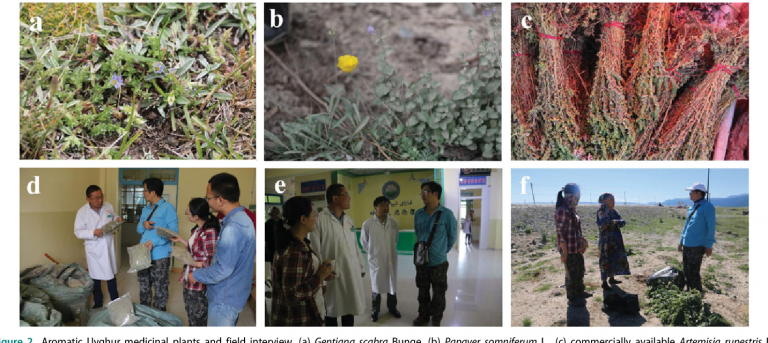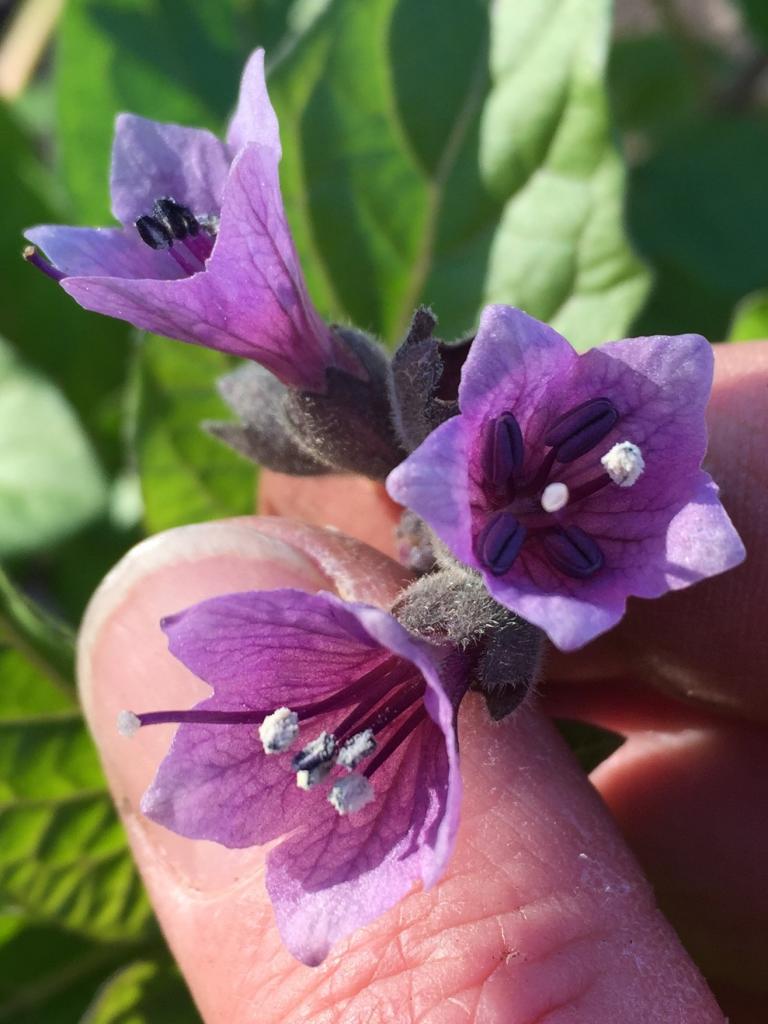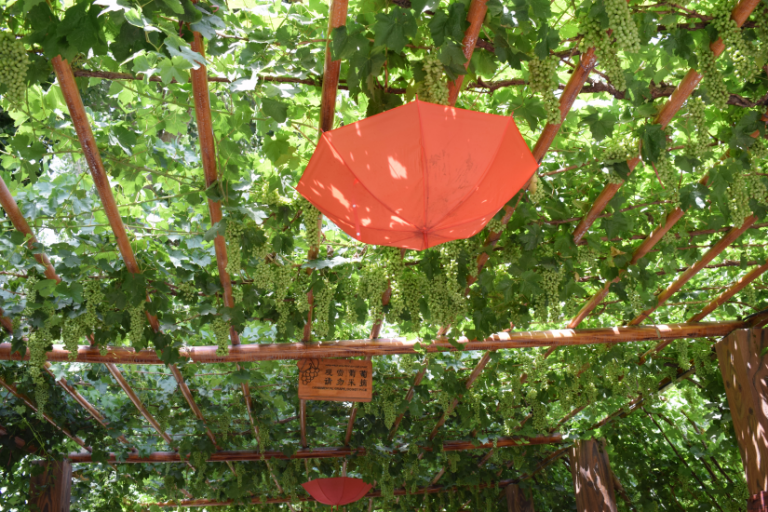Medicinal plants
5 min readThere are totally 1,721 kinds of medicinal plants in Xin jiang.104 kinds in the total of 364kinds of Chinese medicinal materials can be found in Xin jiang. The bulk medicinal plants in Xinjiang mainly are Licorice, Eevee, Safflower, Chinese Ephedra, Herba Cistanches, Chinese Asafoetida, Bergenia, Apocynum Venetm and medlar; the endemic medicinal plants are Arnebia Euchroma Johnst, Fritillaria, snow lotus, Chinese Asafoetida, Xinjiang Cordyceps, European Grape Fruit, wormwood and Cistanche Tubulosa, and so on.Xinjiang is rich in resources of medicinal plants with various and unique varieties, and it is one of the important treasure houses of traditional Chinese medicine resources in China.

Herba Saussureae Involucratae
Over 1,000 years ago,a frontier fortress poet in the Tang Dynasty once praised Saussureae Involucratae like this,”You are ashamed of accompanying with grass; you live upright with your grace alone! Why not come to be appreciated in public, but seclusive with the whole life in the deepest valleys and mountains of ice and snow?”
Herba Saussureae Involucratae, also named as “Snow lotus”, and “Saussurea Involucrate”, is the perennial herb belonging to Saussurea japonica of chrysanthemum family. It is the endemic precious rare herb in Xin jiang, growing on the steep cliffs and in crevices at the altitude of 4,000m on Tianshan Mountains. The climate there is extremely cold, snow will never melt and general plants cannot survive, but Herba Saussureae Involucratae can grow in the cold and anaerobic environment at tens of degrees below zero.This unique living habit and growing environment make it rare and natural and create its unique pharmacological effect and the magical medicinal value. People regard the snow lotus as “King of Herbs”and “the best medicine”.
Herba Saussureae Involucratae is a famous specialty of Xinjiang. supplement to Compendium of Materia Medica written by Zhao Xuemin in the Qing Dynasty recorded that: “snow covers in cold areas without melting even in spring and summer. There lives a kind of grass which is like lotus and very lovely”,”there is a snow covered mountain called Tianshan, and there are lotuses in the snow, and the best grows on the Tianshan peak”. Jia Shumo described the shape and living environment of snow lotus in his Notes about Xinjiang in 1936,”Snow lotus belongs to chrysanthemum family, and it grows deep in the Snow Mountains of Baicheng and Kumul in Tianshan.”Snow lotus has had a medical application history of hundreds of years. Han people regard it as a treasure of treating rheumatoid arthritis, and Uygur and Kazak regard it as gynecological medicine.
The growing period of Herba Saussureae Involucratae from sprout to blossom is about 6to 8 years, and it blooms in July to August of its last year. The bigger the flower is, the better the quality is. The roots, stems, and leaves are rich in alkaloids, flavonoids, volatile oil, lactones, steroids, polysaccharides and reducing substances; and the flower bud is rich in trace elements and amino acids, having the effects of promoting blood circulation, removing cold and dampness, and nourishing and tonifying body, and it can cure all the symptoms caused by cold.
Herba Saussureae Involucratae has the biological characteristic of adapting to the alpine environment. Its leaves are very dense, like the long white cotton wool, forming a cotton ball. Leaves intertwined to numerous “small rooms”, and the air in the “room”is hard to be exchanged with the outside air. Under the direct sunlight during the day, it can absorb more heat than the surrounding soil and air; and at night, the temperature drops slowly, so the form can keep warm and prevent strong water evaporation. The woolly layers can prevent the flower from the intense radiation.

The seed of Herba Saussureae Involucratae sprouts at the temperature of 0℃, and grows at 3℃ to 5℃, and the seedling can withstand the coldness of-21℃. With the short growing period, it can quickly sprout in a short time, and then grow, blossom and bear fruit The plant height can be 5 to 7 times of that of other plants in less than two months due to its strong vitality. It takes 5 years for it to blossom and then sprout, but the actual growth period is only eight months, which is quite unique biologically. It can reproduce with the seeds, but when seeds are ripe, it starts to snow in the alpine regions, so it is quite difficult to collect seeds. The germination rate of the seed is low and it grows slowly, and also it is difficult to make artificial cultivation, so it becomes more precious.
Tianshan snow lotus is a very unique plant that only grows in the north and south slopes of Tianshan Mountains, and the cliffs at the alpine ice moraine zone near the snow line of Altai Mountains and Kunlun Mountains, so the yield is extremely low.
In 1950s and 1960s, Herba Saussureae Involucratae could be picked at the altitude of 1,800m on Tianshan Mountains. At that time, they could be found everywhere with an area ofapproximately 3.33km2. In the 1980s, the flowers grew in group could also be found at the altitude of 2,800 m. But now, there are no trace of snow lotus below the snow line of 3,000m, and the whole grow area in Xinjiang is less than 0.67km2. So Herba Saussureae Involucratae has been listed as the secondary endangered plant in China. In 2001, thegovernment of Xinjiang Uygur Autonomous Region specified that no one was allowed to dig the snow lotus, and it took measures of sealing the mountain pass and closing hillside for three years, while picking and raising in turns until the growth vigor returned to normal.In 2003, Xinjiang Tianshan Snow Lotus Protected Cultivation Base was formally established.
Fritillary
Fritillary is a major specialty in Xin jiang, which is the perennial herbaceous Bulb.Fritillary is a valuable Chinese herbal medicine and it is as equally famous as bulbus fritilariae and Thunberg Fritillary. It includes Fritillaria pallidiflora, Feiergan Fritillaria, and Fritillaria Karelini Baker. The Fritillaria Karelini Baker usually grows in sandy beaches, and the other three kinds of fritillary mainly grow in upland meadows and under the bushes.Fritillaria pallidiflora mainly grows in Yining and Huocheng; Feiergan Fritillaria distributes in many parts of Xinjiang; Fritillaria Maximowiczii mainly grows in Tacheng; and Fritillaria Karelini Baker in Huocheng and Qapqal.
The fritillaria distribution area is located in the temperate western mountain meadows, and the mountain steppe zone in the desert regions, with an annual average temperature of 1.9℃, the January average temperature of -11.1℃, and the July average temperature of 14.3 ℃ ; the annual rainfall is of 500 to 600 mm; and the soil is mountain chestnut soil or chernozem soil with good drainage condition. The best condition is that the water-holdingcapacity is about 25%. Xinjiang Fritillary is a mesophyte liking shade, cool condition, and scattered light, but not resistant to cold.









